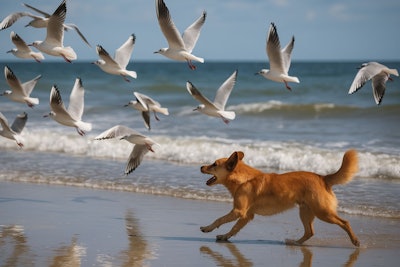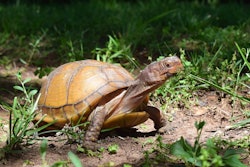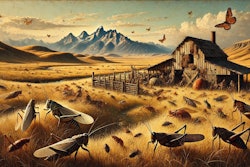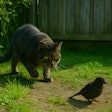
To wildlife and ecosystems, pet dogs will always be predatory invaders, no matter how much people consider those canines to be fur baby family members. Domestic cats, both pets and ferals, have received attention as an invasive species for years. However, pet dogs negatively affect the environment as well, both directly and indirectly. The pet food industry can play a role in decreasing the damage dogs do to wild flora and fauna. An article in Pacific Conservation Biology explored how pet dogs affect plants and animals around them.
I want my daily news update from Petfood Industry.
Domestic dogs (Canis familiaris) are the most numerous non-human vertebrate predators, with more than a billion dogs on Earth, according to the book "Free-Ranging Dogs and Wildlife Conservation" by Matthew E. Gompper, cited by the article's authors. By numbers alone, dogs are bound to affect the environment.
"As well as predatory behavior like chasing wildlife, dogs leave scents, urine and feces, which can disrupt animal behavior long after the dogs have left," study co-author Bill Bateman, associate professor at Curtin University in Australia, said in a press release.
Although domesticated, dogs retain many of their ancestral predatory predilections. Wildlife rescue centers consistently report more admissions for wildlife attacked by dogs than cats, which makes sense when considering how much more damage a Pit Bull can do than a tabby.
In Australia, owned dogs were found to prey upon larger native animals more frequently than cats, accounting for 62% of recorded wildlife predation events. In Tasmania, Little Penguin (Eudyptula minor) colonies have suffered mass fatalities from dog attacks—more than 90% of recorded penguin deaths were attributed to dogs. In another case, a single owned dog killed as many as 500 Brown Kiwis (Apteryx australis) over five weeks.
"Studies have found that animals like deer, foxes and bobcats in the U.S. are less active or completely avoid areas where dogs are regularly walked, even in the absence of the dogs," Bateman said.
For example, ground-nesting and migratory birds like the Fairy Tern (Sternula nereis nereis) and Snowy Plover (Anarhynchus nivosus) are regularly flushed from nests by both leashed and unleashed dogs, and the birds chicks may be killed by the dogs. Even if chicks aren't killed, the bird’s energy-intensive escapes can significantly reduce breeding success and even lead to death from depleted energy reserves, especially in migratory species.
Pollution from dog waste and pet food production
Even after dogs have left the area, their leavings affect ecosystems.
"Dog waste also contributes to pollution in waterways and inhibits plant growth, while wash-off from chemical treatments used to clean and guard dogs from parasites can add toxic compounds to aquatic environments," Bateman said.
A single dog may produce an average 1,000 kg of feces and 2,000 liters of urine over a 13-year lifespan. This volume contributes to nitrogen loading in urban green spaces and water systems.
Meanwhile, canine feces can serve as reservoirs for a range of zoonotic parasites and pathogens, from Toxocara to canine distemper virus, which can devastate wild canid populations, including the endangered African painted dog.
Previous studies have tried to quantify the carbon footprint, or pawprint, or pets. Some have poked holes in the arguments by noting that pet food tends to make use of by-products that otherwise would be wasted. However, premiumization drives increased use of muscle meat and other foods that humans also eat, increasing the resource use associated with pet food. Likewise, packaging waste, energy-intensive refrigerated pet foods and other aspects of the modern pet food industry increase the pollution associated with pet food production and distribution.
"The pet food industry, driven by a vast global dog population, has a substantial carbon, land and water footprint," Bateman said.
What dog food producers can do to reduce ecosystem impacts
Dog owners may be unaware of their pets’ environmental impacts. Pet food makers can inform and educate dog owners about their how to reduce their pets’ effects on wildlife and ecosystems.
Dog food packaging, websites, advertisements and social media can help explain the broader ecological effects of pet dogs, including resource use and wildlife disturbances. For example, a company could create infographics or QR-code-accessible videos that connect sustainable ingredient choices to conservation benefits or that highlight a company’s actions to protect nature.
Considering the end of the dog food product lifecycle, poor dog waste management contributes to pollution of waterways and the spread of disease to wildlife. ement exacerbates this. To take action against this and raise awareness, dog food producers could include biodegradable waste bags in product bundles or offer them as add-ons, while educating consumers about how dog waste affects the environment.
The study’s authors pointed out that the cumulative behaviors of individual owners often fall into the “tragedy of the commons” dynamic. Since everyone shares the Earth’s resources, individual self-interest can lead to the depletion or destruction of the ecosystem services that support us all.
To address this, pet food companies could sponsor or co-create community stewardship initiatives, such as dog-free wildlife zones or habitat restoration projects. Companies can feature conservation-focused messaging in advertising, shifting the narrative from entitled fur babies to responsible members of an ecosystem.
"Many owners simply don't realize the environmental damage dogs can cause, from disturbing wildlife to polluting ecosystems," Bateman said.
"Others may feel their individual actions won't make a difference, leading to a 'tragedy of the commons' where shared spaces like beaches and woodlands suffer cumulative degradation.
"Restrictive measures such as banning dogs from sensitive areas are necessary for protecting vulnerable species but they are not a complete solution. We are calling for a collaborative effort between dog owners, conservation groups and policymakers to develop strategies that balance pet ownership with environmental care."
















